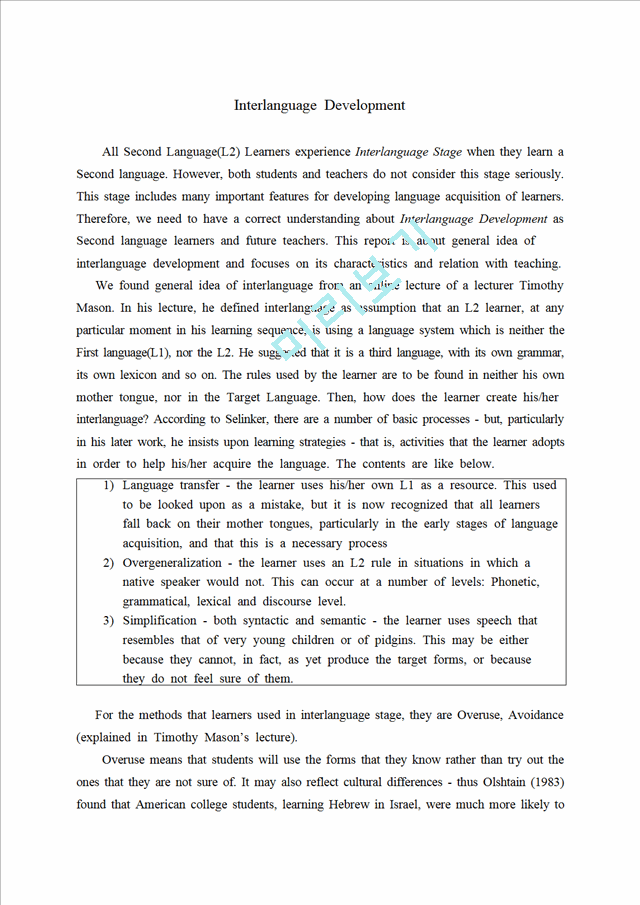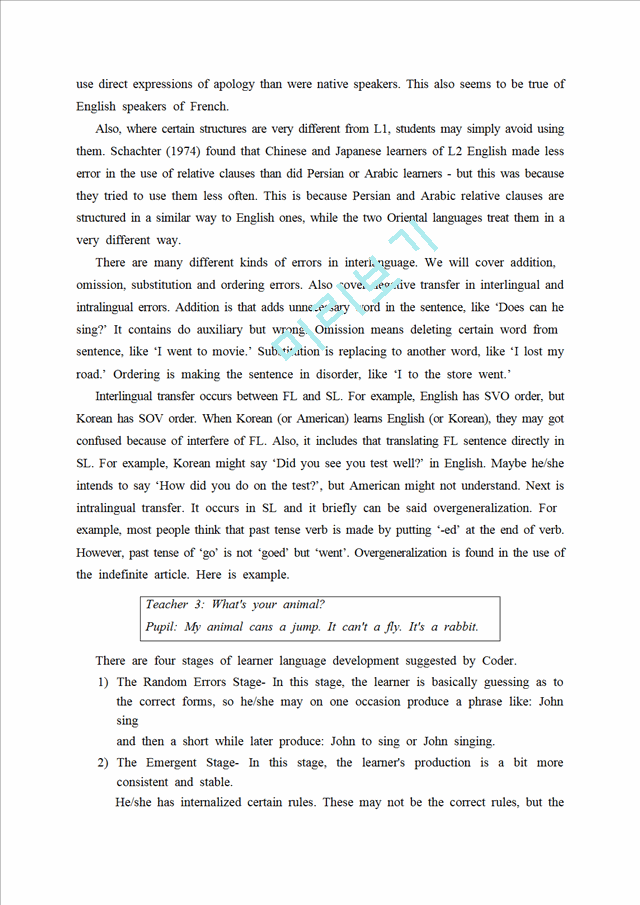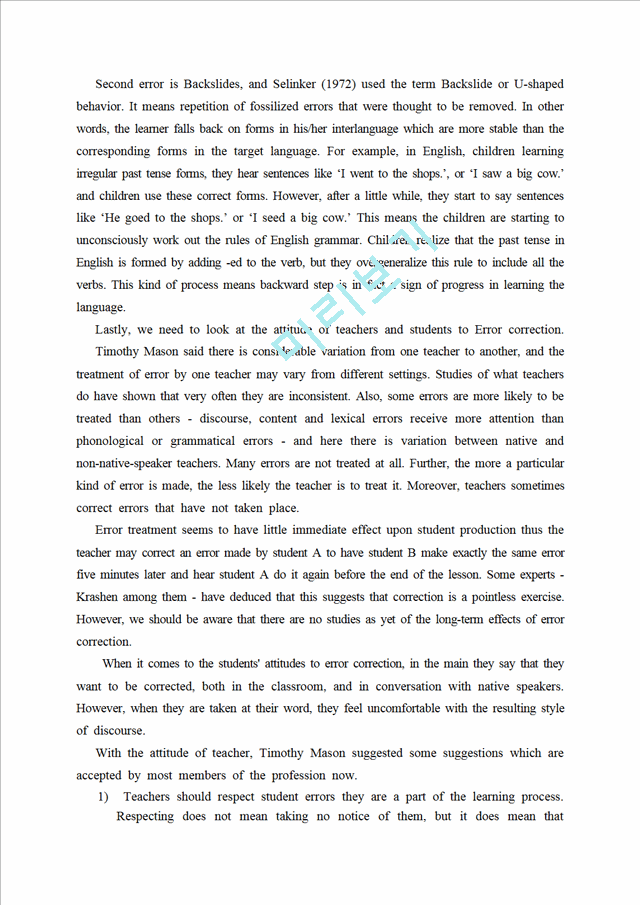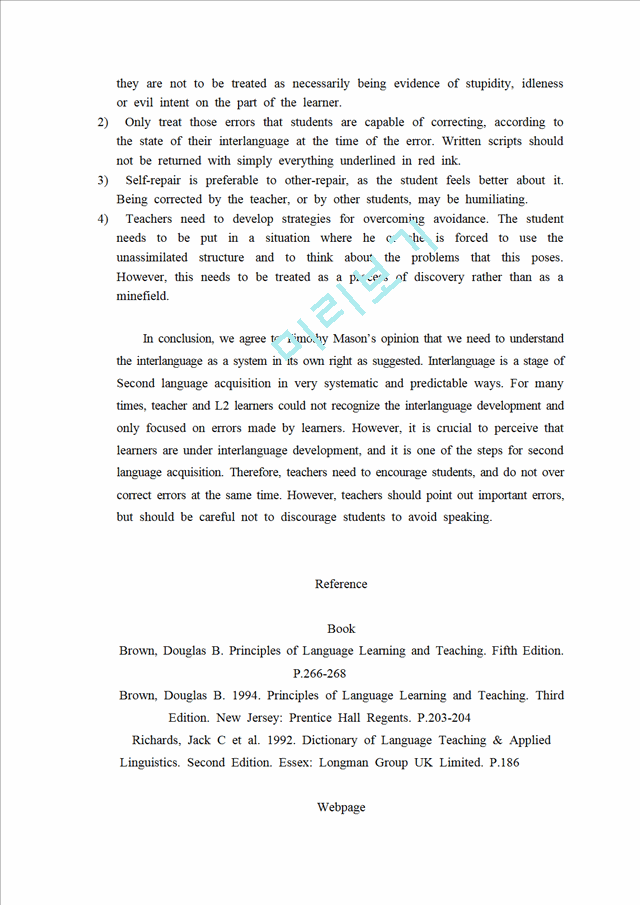|
Interlanguage Development
All Second Language(L2) Learners experience Interlanguage Stage when they learn a Second language. However, both students and teachers do not consider this stage seriously. This stage includes many important features for developing language acquisition of learners. Therefore, we need to have a correct understanding about Interlanguage Development as Second language learners and future teachers. This report is about general idea of interlanguage development and focuses on its characteristics and relation with teaching.
We found general idea of interlanguage from an online lecture of a lecturer Timothy Mason. In his lecture, he defined interlanguage as assumption that an L2 learner, at any particular moment in his learning sequence, is using a language system which is neither the First language(L1), nor the L2. He suggested that it is a third language, with its own grammar, its own lexicon and so on. The rules used by the learner are to be found in…(생략)
1) Language transfer - the learner uses his/her own L1 as a resource. This used to be looked upon as a mistake, but it is now recognized that all learners fall back on their mother tongues, particularly in the early stages of language acquisition, and that this is a necessary process
2) Overgeneralization - the learner uses an L2 rule in situations in which a native speaker would not. This can occur at a number of levels: Phonetic, grammatical, lexical and discourse level.
3) Simplification - both syntactic and semantic - the learner uses speech that resembles that of very young children or of pidgins. This may be either because they cannot, in fact, as yet produce the target forms, or because they do not feel sure of them.
|
either because they cannot, in fact, as yet produce the target forms, or because they do not feel sure of them.
For the methods that learners used in interlanguage stage, they are Overuse, Avoidance (explained in Timothy Mason’s lecture).
Overuse means that students will use the forms that they know rather than try out the ones that they are not sure of. It may also reflect cultural differences - thus Olshtain (1983) found that American college students, learning Hebrew in Israel, were much more likely to use direct expressions of apology than were native speakers. This also seems to be true of English speakers of French.
Also, where certain structures are very different from L1, students may simply avoid using them. Schachter (1974) found that Chinese and Japanese learners of L2 English made less error in the use of relative clauses than did Persian or Arabic learners - but this was because they tried to use them less often. This is because Persian and Arabic relative clause












